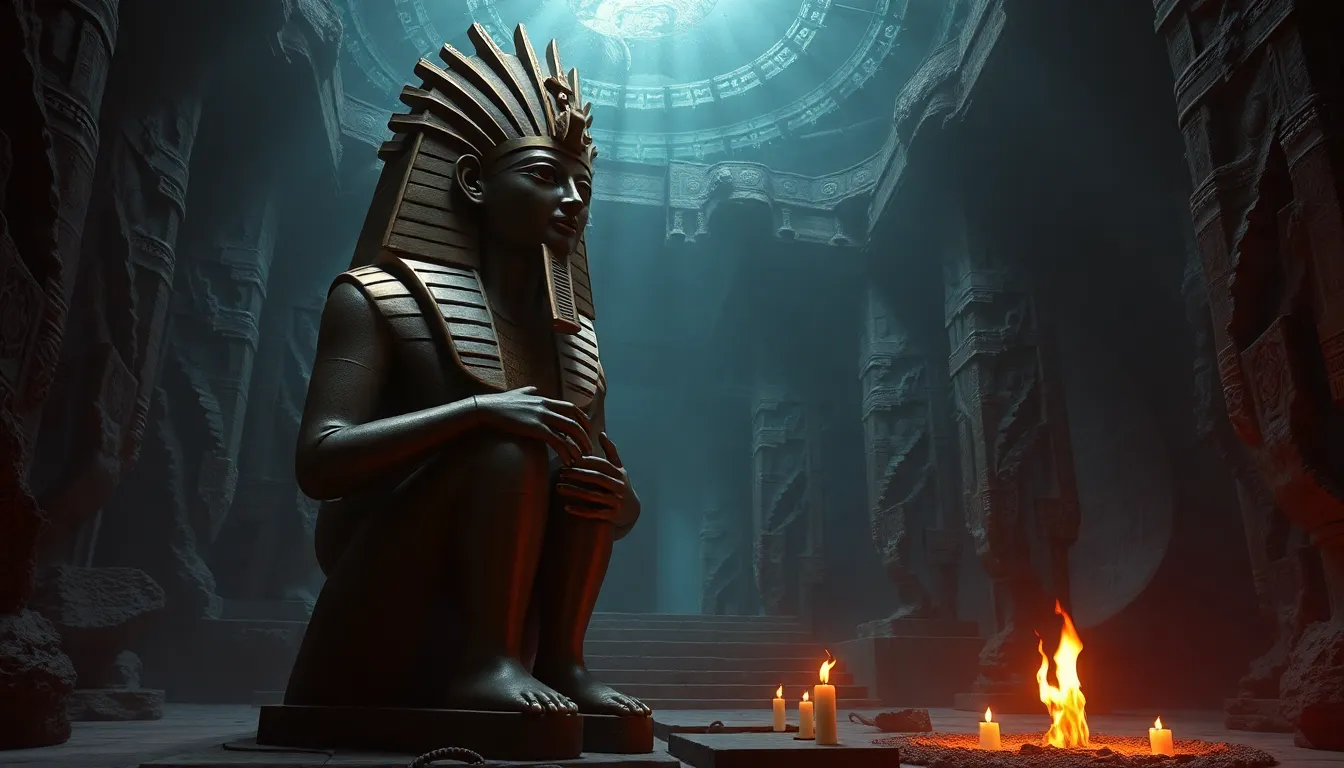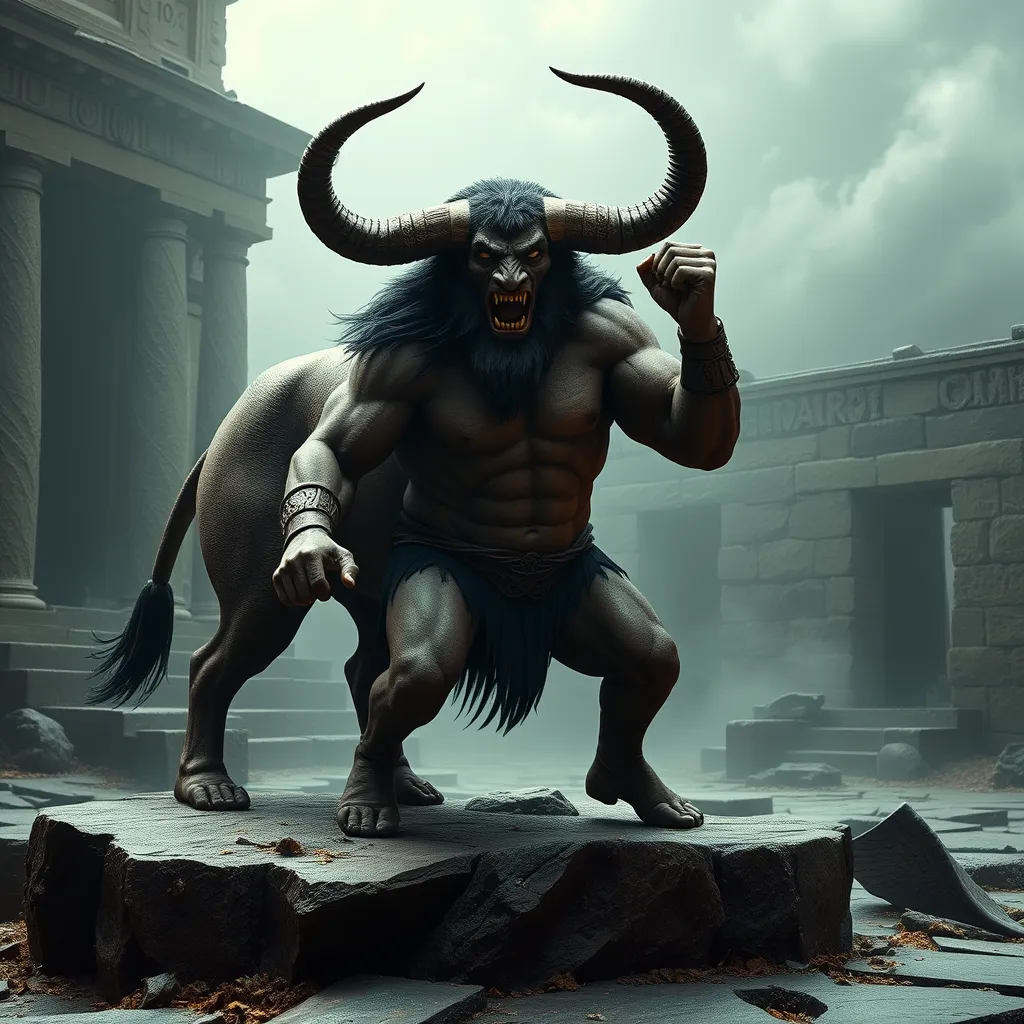The Underworld’s Architect: Examining the Egyptian God Osiris and his Role in the Afterlife
I. Introduction
The ancient Egyptian pantheon is rich with deities, each holding unique significance in the lives and beliefs of the people. Among these, Osiris stands out as a pivotal figure, often regarded as the god of the afterlife. His narrative and attributes reflect a profound understanding of life, death, and resurrection that shaped ancient Egyptian culture and religion.
The afterlife was of immense importance to the ancient Egyptians, intertwining their daily lives with rituals and beliefs aimed at ensuring a favorable fate in the next world. This article delves into Osiris’s role as the architect of the underworld, exploring his origins, significance, and lasting impact on Egyptian cosmology and beyond.
II. The Mythological Origins of Osiris
Osiris’s story begins with a divine lineage. He is the son of Geb, the earth god, and Nut, the sky goddess, making him a central figure in Egyptian mythology. His siblings include the fierce goddess Isis, the destructive Set, and the nurturing Nephthys. This familial backdrop sets the stage for a narrative that encompasses love, betrayal, and resurrection.
In Egyptian cosmology, Osiris embodies the cycle of life, death, and rebirth. His significance is not merely as a god of the dead but also as a symbol of the perennial nature of life itself. The tale of his death at the hands of Set, who dismembers him out of jealousy, and his subsequent resurrection by Isis, underscores the themes of renewal and the eternal cycle of nature.
III. Osiris as the God of the Afterlife
Osiris’s primary role in the afterlife is as the judge of souls. He presides over the weighing of the heart ceremony, where the deceased’s heart is measured against the feather of Ma’at, the goddess of truth and justice. This act determines the fate of the soul—whether it will enjoy eternal life in the Field of Reeds or be devoured by Ammit, the soul-eating demon.
Symbolically, Osiris represents resurrection and renewal. His annual flooding of the Nile is seen as a parallel to his own resurrection, signifying the cycle of planting and harvest, life and death, that was critical for Egyptian agriculture.
His connection to the cycles of nature reinforces his importance; the changing seasons reflect the eternal nature of life, death, and rebirth that he embodies.
IV. The Weighing of the Heart Ceremony
The weighing of the heart ceremony is one of the most significant rituals associated with Osiris. During this ceremony, the heart of the deceased was placed on one side of a scale, while the feather of Ma’at was placed on the other. This ceremony held deep significance as it determined the moral worth of the individual.
- If the heart was lighter than the feather, the deceased was deemed worthy and allowed to enter the afterlife.
- If the heart was heavier, it indicated a life of wrongdoing, and the soul would face dire consequences.
Osiris plays a crucial role in this judgment process, serving as the ultimate arbiter of fate. Unlike other deities involved, such as Anubis, who oversees the weighing, Osiris represents the finality of the judgment, embodying the hope and potential for eternal life.
V. The Underworld: Duat and Osiris’s Domain
Duat, the Egyptian underworld, is a complex realm where souls navigate challenges and trials after death. It is depicted as a dark, labyrinthine place filled with dangers, where the deceased must prove their worthiness to Osiris.
In artistic representations, Osiris is often depicted as a mummified figure, signifying his role as a god of the dead. His presence within Duat symbolizes his authority over the afterlife, guiding souls through the trials they must face.
The landscape of the underworld is fraught with obstacles, including snakes, demons, and other threats. Souls must navigate these perils, often with the assistance of protective spells and prayers, to reach Osiris and secure their place in the afterlife.
VI. Worship and Cult of Osiris
The worship of Osiris was widespread in ancient Egypt, with many temples dedicated to him across the land. These temples served as centers of worship and ritual, where followers would seek his favor for a prosperous afterlife.
- The most famous of these temples is the Osireion at Abydos, believed to be his burial place.
- Rituals often included offerings, prayers, and elaborate festivals celebrating his life and resurrection.
One notable festival is the Wepet-Renpet or the Opening of the Year, which celebrated new beginnings and the renewal of life, reflecting the themes central to Osiris’s myth.
The influence of Osiris worship extended beyond ancient Egypt, impacting later religious traditions, particularly in the realms of resurrection and the afterlife.
VII. Osiris in Art and Literature
Osiris’s image has been immortalized in various forms of Egyptian art, from intricate carvings on temple walls to statues adorned with rich symbolism. His depictions often include the atef crown, symbolizing his authority, and the crook and flail, representing kingship and protection.
In ancient texts and inscriptions, Osiris’s narrative is recounted with great reverence. The “Book of the Dead,” a collection of spells and prayers, often features Osiris prominently, guiding the deceased through the challenges of the afterlife.
Modern interpretations of the Osiris myth continue to resonate, inspiring literature, films, and artistic expressions that explore themes of death, rebirth, and the quest for immortality.
VIII. Conclusion
Osiris’s impact on the concept of the afterlife is profound. As the architect of the underworld, he embodies the ideals of resurrection, renewal, and moral judgment, shaping the beliefs and practices of ancient Egyptians. His legacy endures in contemporary culture, reflecting humanity’s enduring fascination with life, death, and what lies beyond.
Understanding Osiris and his role in ancient beliefs provides valuable insights into the ways cultures navigate the mysteries of existence. As we reflect on these ancient narratives, we recognize the universal questions about life, death, and the hope for an afterlife that continue to resonate through the ages.



